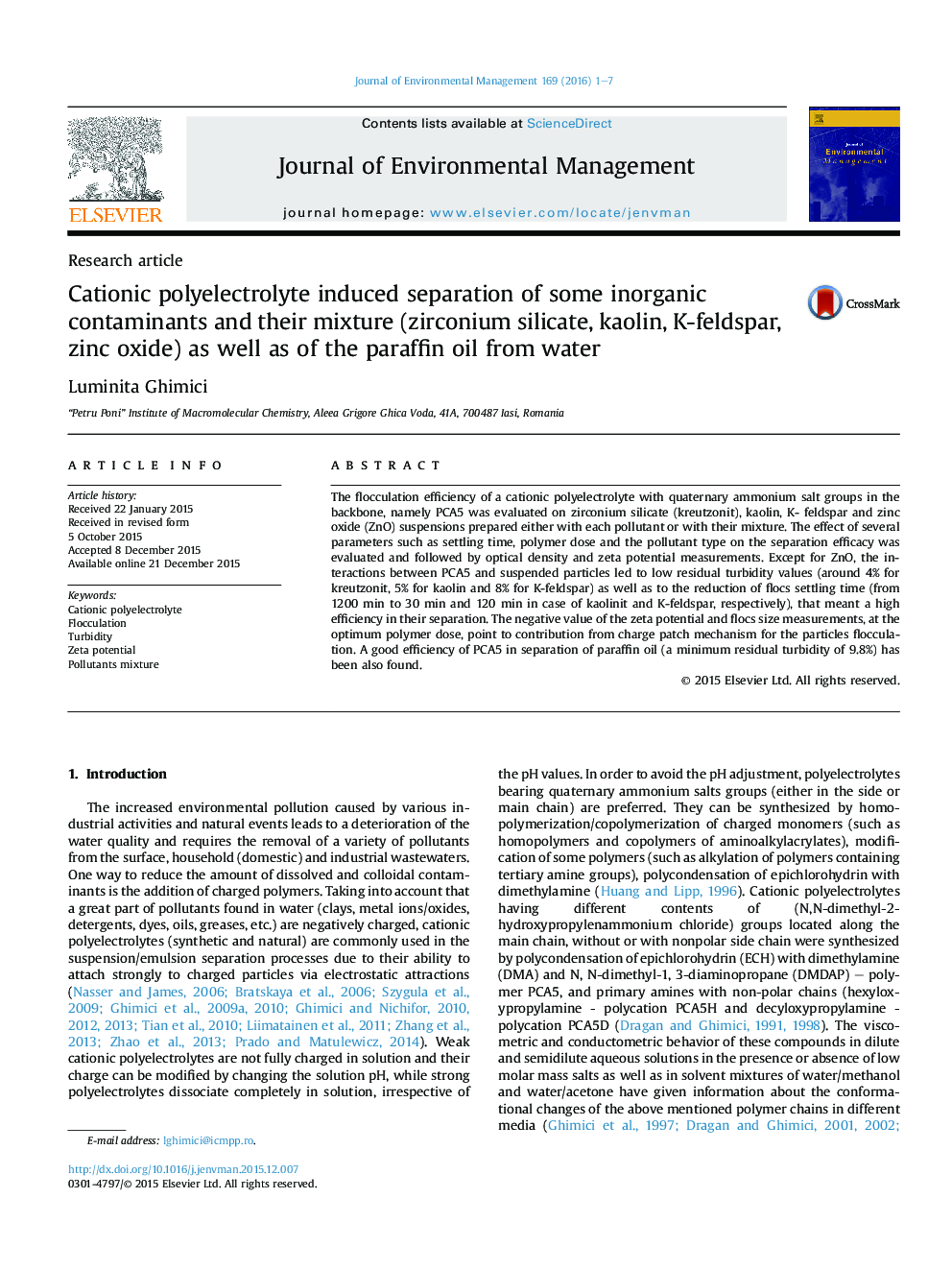| Article ID | Journal | Published Year | Pages | File Type |
|---|---|---|---|---|
| 1055430 | Journal of Environmental Management | 2016 | 7 Pages |
•Cationic polyelectrolyte (PCA5) was studied as flocculants for different particles.•Very low optimum doses (0.06 mg L−1–0.1 mg L−1) were used for the separation of zirconium silicate particles.•Negative values of ζ at optimum dose point to patch mechanism for flocculation process.•PCA5 shows high flocculation performance for the mixture of particles.
The flocculation efficiency of a cationic polyelectrolyte with quaternary ammonium salt groups in the backbone, namely PCA5 was evaluated on zirconium silicate (kreutzonit), kaolin, K- feldspar and zinc oxide (ZnO) suspensions prepared either with each pollutant or with their mixture. The effect of several parameters such as settling time, polymer dose and the pollutant type on the separation efficacy was evaluated and followed by optical density and zeta potential measurements. Except for ZnO, the interactions between PCA5 and suspended particles led to low residual turbidity values (around 4% for kreutzonit, 5% for kaolin and 8% for K-feldspar) as well as to the reduction of flocs settling time (from 1200 min to 30 min and 120 min in case of kaolinit and K-feldspar, respectively), that meant a high efficiency in their separation. The negative value of the zeta potential and flocs size measurements, at the optimum polymer dose, point to contribution from charge patch mechanism for the particles flocculation. A good efficiency of PCA5 in separation of paraffin oil (a minimum residual turbidity of 9.8%) has been also found.
